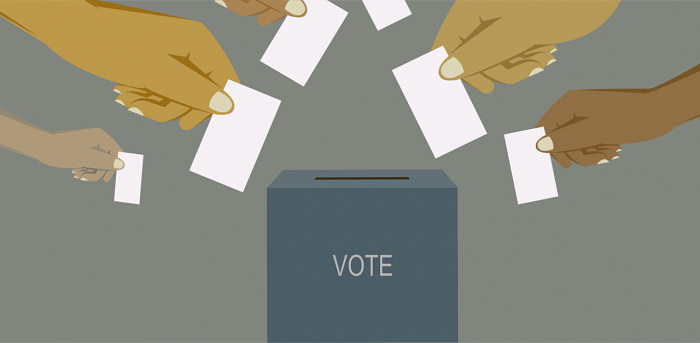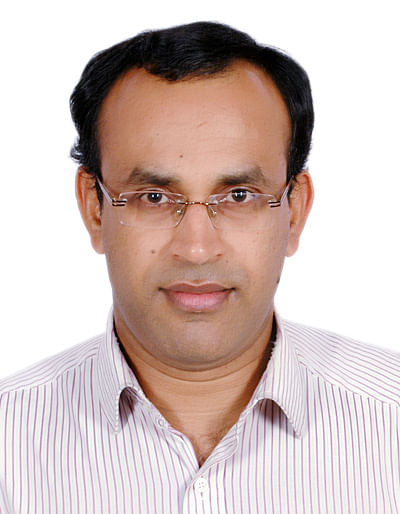
Lingayats and Vokkaligas account for just one-fourth of people of Karnataka, but BJP, Congress and JD(S), the three prominent parties in the state, compete to give them tickets in elections, allocating almost half of the 224 seats to candidates from these communities.
Three parties together have fielded 310 candidates from these communities -- 150 Vokkaligas and 160 Lingayats -- in the May 10 elections, an increase of 5-6 per cent from five years ago.
According to estimates, Lingayats are 14.5 per cent, Vokkaligas 11 per cent, OBC 33 per cent, SC 18 per cent, ST 7 per cent and Muslim 13 per cent in the state. However, some give a higher estimate for Lingayats and Vokkaligas.
Of the 23 chief ministers who have served Karnataka post its formation in 1956, a majority have been Lingayats, followed by Vokkaligas. The BJP has had four chief ministers served so far and in which, only D V Sadananda Gowda is a Vokkaliga. Yediyurappa, Jagadish Shettar and Bommai are all Lingayats.
There is an intense fight for the Lingayat votes this election with the Congress highlighting how the BJP "insulted" leaders like Jagadish Shettar and Laxman Savadi, while the saffron party daring its opponent to name a Lingayat leader like Shettar as Chief Ministerial face instead of its popular face Siddaramaiah, a Kuruba. BJP also held a meeting of Lingayat leaders to counter the Congress' narrative that community members are deserting them.
With Lingayats considered to be the main supporters of the BJP, the saffron party has given tickets to 68 from the community while it has fielded Vokkaligas from 42 seats.
Interestingly, the BJP gave 18 out of 68 seats to Panchamasali, a sub-caste among Lingayats which was on a warpath with the government seeking quota benefits. Elections in mind, the BJP provided more reservation for the community.
This time, the BJP is working hard to increase its seat share from the Old Mysuru region, where the JD(S) has an iron-hold on the Vokkaliga community, and manage to get a majority on its own for the first time.
While it did not give any seat to minorities, the BJP is fielding 37 Dalits and 18 tribal candidates. Of the 37 SC candidates, 13 belong to the Dalit-Left. The Basavaraj Bommai government has announced internal reservation for SC-Right 5.5 per cent, SC-Left 6 per cent, touchables 4.5 per cent and others 1 per cent. The BJP hopes to garner more votes from the SC-Left by providing more quota benefits.
Congress, which is fighting in 223 out of 224 seats, has fielded 53 candidates from Vokkaliga community, 51 from Lingayats, 14 Muslims, 36 Dalits and 16 tribals.
In a bid to woo Lingayats, who have favoured the BJP more than any party, the Congress has given four more tickets to the community than it gave in 2018. The party is also looking to garner more votes from the Vokkaligas and check the JD(S) by fielding seven more candidates from the community than five years ago.
Fighting only 211 seats, the JD(S) has fielded 55 Vokkaligas and 41 Lingayats, 23 Dalits and 13 tribals. Interestingly, the JD(S) fielded 23 Muslim candidates, which is the highest by any party in the state.
"Among Congress candidates, the strike rate of candidates from our community -- Lingayats -- are always higher. That was the case even in 2018 Assembly polls," Congress campaign committee chairman M B Patil said.
"For political parties, winnability is most important. They are not social reformers to undertake experiments. Their main agenda to win the elections. Lingayats and Vokkaligas always have a hold among voters for various reasons. So naturally, political parties field more candidates for these two communities," says Valerian Rodrigues, political scientist.
"Lingayat Mutts have a large following among voters cutting across the castes due to their social services. Even Hindutva is increasing among Vokkaligas as the community entrenchment is changing," Former Professor, JNU, added.
